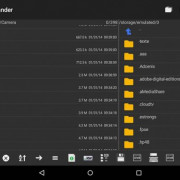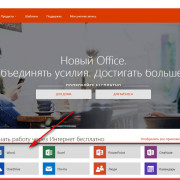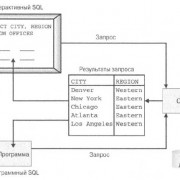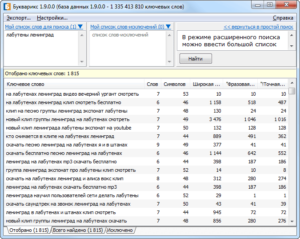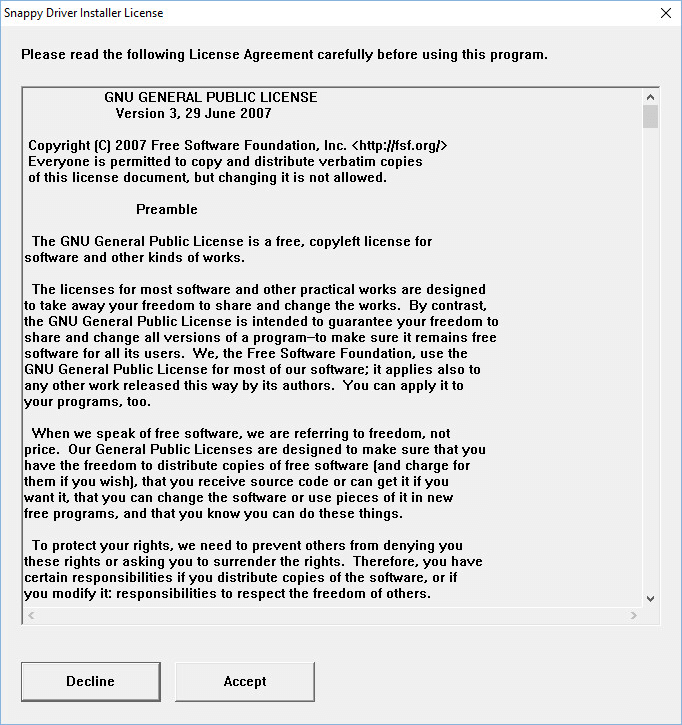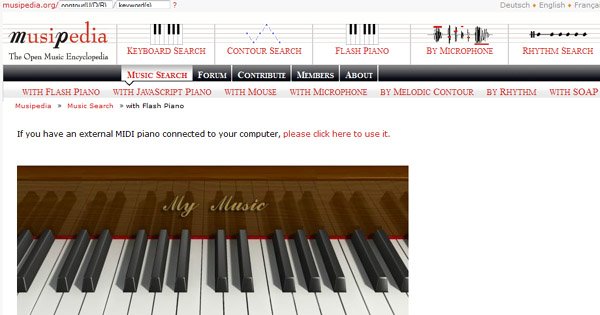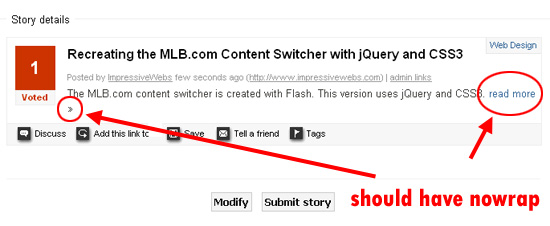Keyword tool — это лучшая альтернатива планировщику ключевых слов google ads и инструментам для поиска ключевых слов
Содержание:
- Step-by-Step: How to Use Google Keyword Planner
- 5 заключительных советов
- Чистим список от нерелевантных фраз
- Getting Estimates and Reviewing Your Keyword Plan
- What Features Does the Tool Provide?
- Step #2: Choose Your Tool
- Historical metrics
- What your historical metrics mean
- Статистика
- Значение показателей за прошедший период
- How to use Google Keyword Planner
- Определение ставок и дневного бюджета
- An Introduction to the Keyword Planner
Step-by-Step: How to Use Google Keyword Planner
Whether you already had a Google Ads account or have just set one up from scratch, the first screen you will see when you access the Keyword Planner presents you with the two available starting points:
- Discover new keywords
- Get search volume and forecasts
Before you even begin to learn how to use these paths through the Keyword Planner tool, you need to know and understand what each of these does, as well as how and when they are useful.
Once you know which starting point should be taken for different tasks, you will move a lot faster. It is also important to know how these differ between keyword research for SEO and for PPC.
Discover New Keywords
When you are looking to identify keywords opportunities, head straight for ‘discover new keywords,’ as this is where you will be able to find new keywords and gain insights into the search terms which your potential customers and audiences are using. When you are looking for new opportunities or want to explore the keywords being used, with only a few starting point search terms to hand, this is where you will want to start.
Get Search Volume and Forecasts
On the other hand, if you have already got a list of keywords that you want to explore and see the metrics for, you want to start with ‘get search volume and forecasts.’
What you won’t find here are keyword suggestions. This isn’t where you find new opportunities, but instead, an insight into the estimated volume of clicks and impressions you could expect to receive, over the next 30 days, were you to run ads using these keywords. You will also see other metrics, including estimated costs, CTR, and average CPC.
The power of Google’s Keyword Planner is that it is such a flexible tool with a number of different uses, so let’s take a look at what these are and walk you step by step through the process you’ll need to take to get the most out of it.
5 заключительных советов
В заключение хочу дать несколько советов тем, кто будет придерживаться моего алгоритма при работе с Планировщиком:
- При составлении списка базовых слов не ленитесь проработать его достаточно глубоко. Проработанный список не только даст возможность получить близкий к максимальному охват целевых запросов, но и станет вашим проводником при создании и настройке кампании и сэкономит время, когда появится задача увеличить охват и трафик кампании.
- Скрупулезно перебирайте базовые слова и просматривайте все доступные варианты, которые выдал Планировщик. Часто бывает, что очень дешевые и при этом целевые ключевые слова находятся в самом конце предложенных вариантов. При грамотной фильтрации количество вариантов для одного базового слова редко превышает 200 единиц, то есть всего 7 страниц результатов.
-
Если какое-то ключевое слово «перетягивает» на себя львиную долю трафика, а значит и бюджета, проведите небольшой мозговой штурм и задумайтесь, о чем думают люди, которые вводят его в поисковую систему, на каком этапе принятия решения о покупке они находятся. Подумав над этим, скорее все вы захотите ставку для такого ключевого слова снизить.
Хорошим примером такого размышления может стать случай из моей практики. Несколько лет назад, настраивая кампанию по садовым триммерам (инструмент для покоса травы), я получал очень много кликов по запросу «купить триммер». Но конверсий при этом он особо не давал. Отминусовав все слова, указывающие на триммер для волос (парикмахерский инструмент), мусора стало меньше, а конверсий все не было. Тогда в мою голову пришла на тот момент «гениальная мысль»: люди, которые вводят запрос «купить триммер», возможно, ищут триммер для волос, просто не уточняют это. Никакая минусовка тут не поможет, а выключение таких ключевых слов поможет сэкономить бюджет и соответственно, избежать роста цены за конверсию.
- Ключевые слова, которые, по данным Планировщика, имеют частоту свыше 100 запросов в месяц, я рекомендую использовать не только в модифицированном типе соответствия, но и во фразовом. А если запрос достаточно конкретный, то и в точном. Ключевую фразу в трех типах соответствия нужно добавить в одну группу объявлений. Это позволит в будущем точнее управлять ставками для запросов, связанных с этим ключевым словом, а модифицированный вариант мы используем для сбора статистики по различным низкочастотным запросам, которых Планировщик не показал.
- Не пренебрегайте вариантами оптимизации, которые предлагает AdWords. Их можно найти в верхнем меню на вкладке «Оптимизация». Там вы найдете советы не только по ставкам для ваших кампаний, но и варианты ключевых слов, которые следует добавить. Это просто способ заполнить пропуски, которые образовались в процессе сбора семантического ядра через Планировщик.
Чистим список от нерелевантных фраз
Чтобы не просматривать каждую из 2,5 тысяч фраз в списке, воспользуемся фильтрами. Для этого нам нужна функция «Уточнить ключевые слова», с помощью которой можно отфильтровать список по категориям, определенным Планировщиком.
Фильтруем ключевики с помощью уточнения
1. Кликаем на ссылку «Уточнить ключевые слова».

Здесь есть несколько вариантов уточнения:
По брендам. Планировщик определяет, в каких ключевиках упоминаются бренды, а в каких таких упоминаний нет (non-brands). Так как в нашей кампании мы рекламируем фотоаппараты Canon, нас не интересуют запросы без упоминания бренда, также не нужны запросы с упоминанием брендов конкурентов. Поэтому исключаем: небрендовые запросы, запросы с брендами конкурентов, фразы с упоминанием других брендов (не относящихся к производителям фототехники).
Модели камер. Здесь перечислены все модели, которые есть в нашем магазине. Поэтому оставляем все галочки – исключать ничего не нужно.
Блок «Евангелие». Здесь забавный момент – упоминание поколений фотоаппаратов Canon (mark 2, mark 3 и т.д.) Google определил как название Евангелий от Марка
Но для нас это не столь важно. Главное, что эти ключи относятся именно к фотоаппаратам, а у нас все эти модели есть в ассортименте
Поэтому в этом блоке ничего не исключаем.
Слова автоматически удаляются из таблицы, общее количество фраз теперь – 2523.

Getting Estimates and Reviewing Your Keyword Plan
The next step of the Keyword Plan process involves setting a keyword bid and daily budget for your portfolio of keywords and keyword groupings.
Since keyword volume and CPC bid estimates vary wildly based on your budget, bid, location, and other factors, it’s important that you provide Google with some information to customize your estimates.
For example, you could enter in a bid of $40 and a daily budget of $1,000.00 and based on those settings, the Keyword Planner will generate detailed daily estimates for clicks, impressions, average ad position, and costs, as shown here.
AdWords Keyword Planner’s generated daily estimates.
What Features Does the Tool Provide?
To make your quest for the right keywords more relevant, you can rely on different features inside the tool. Let’s guide you through them:
Negative Keywords – You’re not selling cheap handmade soap, but it’s what people search on Google. If you want to exclude “cheap” from the list, you’ll mark it as a negative keyword.

Search Options – Do you want to target Google only?

Desired Language – It makes no sense to search for English keywords if you want to promote a local business somewhere in Hungary.

Location – You can specify it from the top left menu. With this, you’ll get keywords relevant for the area that your business targets.

Date Range – If you’re running a seasonal marketing campaign, set the date range to the proper period.

Step #2: Choose Your Tool
There are two main tools inside of the GKP.
And now I’m going to show you how to use these two tools to help you create a massive list of keywords for your SEO campaigns.
1. Discover New Keywords
Like the name suggests, this tool is ideal for finding new keywords.
As you can see, the field above this tool says: “Enter products or services closely related to your business”.

Quick Note: The value you get from the Keyword Planner is largely based on the information that you enter here. So you want to be VERY strategic about what you enter into this field.
So to help you get the most out of this tool, I’ll break down each of the two main options.
“Start With Keywords”: These words and phrases that describe your business (for example, “weight loss” or “coffee”). This allows you to access Google’s internal database of keywords for different industries.
Pro Tip: You can enter multiple keywords into this field. Just put a comma after each keyword and press enter. For example, if you run an ecommerce site that sells cookies, you’d want to enter terms like “gluten free desserts” and “low carb cookies” here.

“Start With a Website”: This is designed for Adwords users. But you can sometimes find a few solid keywords here using your site’s homepage… or an article from your site.
(More on that later)
Once you’ve entered your information into one (or all three) of the fields, click “Get Results”.

Next, you’ll see the Keywords Results Page. I’ll show you how to use that part of the Keyword Planner later in the guide.
For now, let’s dive into the second tool in the GKP: search volume and forecasts.
2. Get search volume and forecasts for your keywords
This feature is only really useful if you already have a long list of keywords… and just want to check their search volume. In other words, this tool won’t help you generate new keyword ideas.
To use it, copy and paste a list of keywords into the search field, and hit “Get Started”.
You’ll also see the same Keywords Results Page you see when you use the “Find new keywords” tool.
The only difference is that a) you only get data on the keywords you entered and b) Google will predict how many clicks and impressions you’ll get from the keywords you entered:

No matter which tool you ultimately used, you end up in the same place: The Keywords Result page.
And now it’s time for me to do a deep dive into how that page works… and how to get the most out of it.
Historical metrics
When you use Keyword Planner to get historical metrics for your keywords or campaigns, you’ll see detailed statistics in a table that can help you select keywords to use in your campaign. Bear in mind that forecasts take bid, budget, seasonality and other factors into account, while historical metrics don’t.
What your historical metrics mean
- Average monthly searches (‘Avg. monthly searches’): The average number of times that people have searched for a keyword and its close variants based on the month range as well as the location and Search Network settings that you selected. You can use this information to see how popular your keywords are during different times of the year. By default, the number of searches for the term (regardless of language) is averaged over a 12-month period.
- Competition: The number of advertisers that showed on each keyword relative to all keywords across Google. Note that this data is specific to the location and Search Network targeting that you’ve selected. In the Competition column, you can see whether the competition for a keyword is low, medium or high.
- Top-of-page bid (low range): The lower range bid – an approximation of the 20th percentile – that advertisers have historically paid for a keyword’s top-of-page bid, based on your location and Search Network settings.
- Top-of-page bid (high range): The higher range bid – an approximation of the 80th percentile – that advertisers have historically paid for a keyword’s top-of-page bid, based on your location and Search Network settings.
- Organic impression share (‘Organic impr. share’): The percentage of times that a listing from your website showed up in web searches for a keyword. This is calculated by dividing the number of web searches that showed a listing from your website by the total number of searches for that keyword idea.
- Ad impression share: The number of impressions that you’ve received divided by the total number of searches for the location and network that you’re targeting that matched the keyword exactly in the last calendar month. Bear in mind that the ad impression share column in Keyword Planner is different from the impression share and exact match impression share columns in campaign management, which are based on the number of impressions that you were eligible to receive for a keyword. In Keyword Planner, ad impression share is based on the search volume for that exact keyword. When you see a dash (-) in the ad impression share column, that means that there isn’t enough data to calculate this number.
Things to bear in mind about your historical metrics
- Your search volume statistics are rounded. This means that when you get keyword ideas for multiple locations, the search volumes might not add up as you’d expect.
- Web traffic is influenced by seasonality, current events and a number of other factors. Therefore, the number of searches on your keywords is constantly fluctuating.
- Keyword forecasts can help you determine your estimated performance. Your forecasted impressions take your bid, budget, seasonality and historical ad quality into account, but your search volume statistics don’t. Also, your search volume is determined only for exact keyword matches, while your estimated impressions are based on your selected match types.
- Bid range statistics can help you decide which keywords to use for a campaign. Bid range statistics, or ‘top-of-page bid (low range)’ and ‘top-of-page bid (high range)’, can also help you choose an effective bid for your keywords. Bid range statistics take into account the bids that resulted in an ad being shown among the ads at the top of the first page of search results.
- Bid range statistics show bid information from the last 30 days. You might not see bid range statistics for keywords that have limited historical bid information. Because showing an ad at the top of the first page of results is based on a combination of bid, quality score and other factors, you can use these metrics to help adjust your bids in relation to similar keywords’ quality scores.
Статистика
В Планировщике ключевых слов можно посмотреть таблицу с подробной статистикой по ключевым словам и кампаниям. Эти данные помогут вам при подборе ключевых слов
Обратите внимание, что показатели за прошедший период, в отличие от прогнозов, не учитывают ставку, бюджет, время года и другие факторы
Значение показателей за прошедший период
Среднее число запросов в месяц. Среднее количество запросов с ключевым словом и близкими к нему вариантами при выбранных настройках поисковой сети, местоположения и диапазона дат. Используется для оценки эффективности ключевых слов в разные периоды. По умолчанию количество поисковых запросов (вне зависимости от языка) приводится за 12 месяцев.
Уровень конкуренции. Популярность ключевого слова, а именно отношение количества рекламодателей, использующих это ключевое слово, к общему количеству ключевых слов в Google. Показатель учитывает местоположение и настройки таргетинга в поисковой сети. В столбце показан уровень конкуренции (низкий, средний или высокий) за это ключевое слово.
Ставка для показа вверху страницы (мин.). Величина, превышающая примерно 20 % наименьших ставок, при которых объявления показывались вверху страницы (согласно статистике для всех рекламодателей). Показатель учитывает местоположение и настройки таргетинга в поисковой сети.
Ставка для показа вверху страницы (макс.). Величина, превышающая примерно 80 % наименьших ставок, при которых объявления показывались вверху страницы (согласно статистике для всех рекламодателей). Показатель учитывает местоположение и настройки таргетинга в поисковой сети.
Процент полученных показов (обычный поиск). Процент показов ссылки на ваш сайт при поиске по определенному ключевому слову. Рассчитывается путем деления числа поисковых запросов, по которым был показан сайт, на общее количество запросов по этому ключевому слову.
Процент полученных показов. Отношение количества полученных показов к общему числу поисковых запросов, точно соответствующих ключевому слову и выбранным настройкам таргетинга, за последний календарный месяц
Обратите внимание, что значения в этом столбце Планировщика ключевых слов отличаются от значений в столбцах «Процент полученных показов» и «Процент показов по ключевым словам с точным соответствием» на странице управления кампаниями. Они основаны на общем числе показов по ключевому слову, которые вы могли получить, а процент полученных показов в Планировщике ключевых слов – на количестве запросов конкретного ключевого слова
Если данных для расчета недостаточно, в столбце «Процент полученных показов» будет прочерк.
Что следует учитывать при анализе показателей за прошедший период
Мы округляем статистику количества запросов. Это означает, что если вы получите варианты ключевых слов для нескольких местоположений, то итоговое количество запросов может не соответствовать сумме запросов для отдельных местоположений.
Активность пользователей в Интернете зависит от времени года, текущих событий и ряда других факторов, а потому количество поисковых запросов по ключевым словам постоянно меняется.
Прогнозы по ключевым словам помогают оценить эффективность
При расчете количества показов принимаются во внимание ставка, бюджет, время года и статистика качества объявления, но не статистика количества запросов. Кроме того, количество запросов определяется только для ключевых слов с точным соответствием, тогда как расчетное количество показов зависит от выбранных вами типов соответствия.
Статистика диапазона ставок помогает понять, какие ключевые слова стоит использовать в кампании
Эта статистика, представленная показателями «Ставка для показа вверху страницы (мин.)» и «Ставка для показа вверху страницы (макс.)», также помогает выбрать эффективные ставки для ключевых слов. Она основана на фактических ставках, при которых объявления появлялись в верхней части первой страницы результатов поиска.
Статистика диапазона ставок включает данные за последние 30 дней. Учтите, что статистика диапазона ставок может отсутствовать для ключевых слов, по которым недостаточно данных. Показ объявления в верхней части первой страницы результатов поиска зависит от ряда факторов, например ставки и показателя качества, следовательно эти параметры можно использовать для корректировки ставок с учетом показателя качества похожих ключевых слов.
How to use Google Keyword Planner
Once you launch the tool as we mentioned above, you can start the research in 2 ways:
- Find new keywords – this will help you to find new keyword ideas
- Get search volume and forecasts – this will help you to get search volumes and forecasts for your keywords
1. Find new keywords
Type in words, phrases or URL related to your business and you’ll get the following data (these are keyword ideas for “blueberry muffin”):
You can adjust the results by changing the location, language or time period. Keyword planner found 749 keyword ideas with the following metrics:
- Avg. monthly search volume
- Competition in Google Ads
- Bid ranges
If you connect your Google Search Console with Google Ads, you will also see the organic average position and impression share if you rank for any of the listed keywords.
2. Get search volume and forecasts
When you already have a list of keywords, bring them on to get the following data:
Keyword Planner will calculate a bunch of useful numbers including the impressions, clicks, cost, CTR, conversions, or CPA. The funny thing is, you will not see the search volumes despite the fact that this feature is called “Get search volumes and forecasts”.
How to get the search volumes:To see the search volumes, you have to click on the “Historical Metrics”.
Just in case you would like to check the official Keyword Planner guide, you’ll find it here.
Определение ставок и дневного бюджета
Когда структура готова, можем смело перейти к прогнозированию показателей кампании. Для этого нажимаем на кнопку «Просмотреть план».
Здесь мы проделаем две операции:
Проверяем ожидаемый охват (показы) и потенциальный трафик (клики), подбираем ставки для ключевых слов
Так мы определим, какие ставки для каких ключевых слов нужно назначить, чтобы распределить бюджет в пользу более точных или транзакционных запросов (критерии «важности» ключевых слов различаются от проекта к проекту).
Определяем дневной бюджет и объем трафика, который мы получим. Для максимально точной оценки бюджет рекламной кампании, который есть у вас, нужно разделить на 30,4
Полученная цифра и будет дневным бюджетом. Вводим ее в соответствующее поле и получаем уже более точные прогнозы по объему трафика, на основании которых можем внести корректировки как в список ключевых слов, так и в ставки, которые мы назначили.
Подсказка: если присмотреться к графику «Охват», по осям которого расположены Средняя стоимость клика и их Количество, можно заметить, что зависимость не является линейной, то есть трафик в какой-то момент начинает расти медленнее стоимости клика.
Если не вдаваться в детали, можно сказать, что стоит стремиться получить тот объем кликов, который расположен на графике сразу после места максимально быстрого прироста трафика. Звучит сложно, но на скриншоте это место видно сразу:
Находим это место на графике и видим, что ставка находится на уровне 4,7 грн. за клик.
Естественно, что просто повышать стоимость клика для всех слов одновременно бессмысленно, поэтому следует управлять ставками раздельно (как мы делали ранее). Повышать ставку стоит для самых важных и точных ключевых фраз, а для высокочастотных оставить ее на прежнем уровне или снизить. Эту операцию мы проделываем в таблице ключевых слов, которая расположена под графиком:
Нажав на значение в столбце «Макс. цена за клик» напротив нужного ключевого слова, мы можем изменить ставку и сразу же увидеть, как меняется охват и объемы трафика. Эта операция полезна, так как установленные нами ставки сохраняются в рекламном плане и при создании кампании мы увидим, какую ставку нужно задать для каждого ключевого слова.
Важно: так как мы будем изменять тип соответствия ключевых слов при создании кампании, то реальные показатели будут отличаться от оценочных. Общее правило таково: чем точнее будет соответствие у ключевого слова в кампании, тем меньше показов мы получим
Однако это не значит, что число кликов упадет так же быстро — если правильно «попасть» объявлением в нужды потенциального клиента, то CTR по такому ключевому слову может быть выше прогнозированного. Прогнозный CTR редко превышает 7-8%, хотя в реальных кампаниях CTR часто оказывается больше 10% на длинной дистанции. Именно за счет этого прогноз количества кликов не будет так уж сильно отличаться от реальности.
An Introduction to the Keyword Planner
Once known as the Google Keyword Tool, Keyword Planner is a tool that every search marketer needs to familiarize themselves with and get to know inside out. It is a great way to discover new keywords to target in your campaigns, understand how searches across keywords have changed over time, see suggested bid estimates to help plan your Google Ads budget and more. If you need to find the right keywords for your business, it is a great place to start.
That said, the deeper you go into the tool, the more value you will get from it.
But don’t let that stop you from getting started; it is easy to get to grips with it and in just minutes you will start to understand the way in which your audience is using Google to find businesses just like yours.
How to Access Keyword Planner
Don’t worry, Google Keyword Planner is a free tool, and you can gain access without running ads, and here is how to do it:
Click on the ‘New Google Ads Account’. You should then be asked, ‘What’s your main advertising goal?’ See the small print at the bottom of your screen? Go ahead and ‘Switch to Expert Mode’ to bypass having to set any advertising goals.
At the bottom, on the right, you will see an option to ‘Create an account without a campaign.’
Once you have clicked this, you are almost there. You will just need to confirm your business information:
You won’t be asked to enter any billing details, so go ahead and ‘submit’. You can now explore your account.
You will be taken to an empty ‘campaign overview’ page. At the top of your screen, you should see a ‘Tools & Settings’ Icon.
Clicking this will reveal the tools and settings menu, on which you will see the ‘Keyword Planner’ item under the ‘Planning’ column.
That’s it. You are in…
You are now ready to use the Keyword Planner and learn how to get the most from the tool.
Accessing Keyword Planner when you are running Google Ads:
